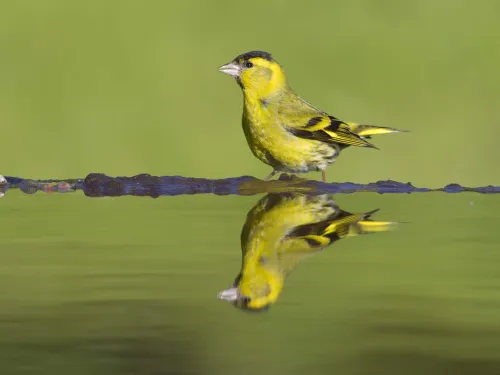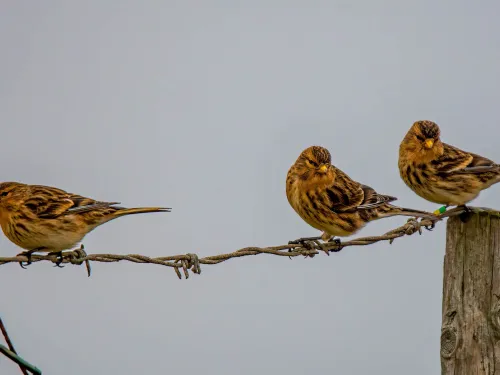
Chaffinch
The colourful and delightful chaffinch is a regular garden visitor across the UK. Look out for it hopping about on the ground under birdtables and hedges.

Finches and buntings are seed-eaters though buntings generally feed from the ground while finches tend to feed in trees and shrubs. Learn more about them and how to identify them in our species guides.

The colourful and delightful chaffinch is a regular garden visitor across the UK. Look out for it hopping about on the ground under birdtables and hedges.

The linnet can be seen on farmland and heathland across the UK. But, like so many other farmland birds, linnets are declining rapidly, mainly due to agricultural intensification.

Traditionally a small finch of woodland and scrub, it appears that the lesser redpoll is now moving into our gardens. It has a streaky brown body, red forehead and black bib, and mostly feeds on seeds.

An attractive, olive-green bird, the greenfinch regularly visits birdtables and feeders in gardens. Look for a bright flash of yellow on its wings as it flies.

The striking red crown, golden back, and bright yellow wings of the goldfinch make it one of our prettiest garden birds. It happily visits birdtables and feeders across the UK.

An attractive, green-and-yellow bird, the siskin regularly visits birdtables and feeders in gardens. Look for the bright yellow barring on its black wings, and the black crown of the males.

The rose-red breast, large black cap and thick bill make the bullfinch easy to identify. A plump-looking bird of woodlands, hedgerows and orchards, it also frequents gardens.

As it names suggests, the common crossbill has a large bill that is crossed at the tip - perfect for picking the seeds out of pine cones. Look for it in conifer woodlands, mainly in the north and south.

A streaky brown bird, the reed bunting can be found in wetlands, reedbeds and on farmland across the UK. Males sport black heads and a white 'moustache'.

Like many of our farmland birds, the yellowhammer has declined in number in recent years. Spot this bright yellow bird singing from the top of a bush or fence, or in a mixed-species flock in winter.

Like many of our farmland birds, the corn bunting has declined in number in recent years. Spot this streaky brown, thick-billed bird singing from a wire or post - it sounds just like a set of jangling keys!

These winter visitors are close relatives of the chaffinch and can often be found in the same flocks, where their white rump and nasal calls give them away.

Only a few pairs of snow bunting breed here, so look out for this striking black-and-white bird in winter around Scotland, the North West and the East coast of England.

The hawfinch is the UK's largest finch, with an enormous bill powerful enough to crush a cherry stone. Despite their size, they are typically elusive, especially during the summer nesting season.

This small finch nests on moorlands and coastal crofts, spending the winter on the coast. The UK population has declined dramatically.